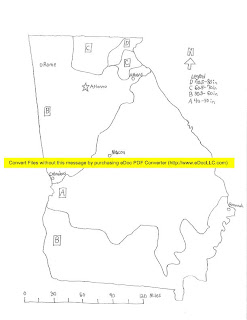Here's the basic transect line we used when we were measuring the River. Here are the results:
To give you an better idea as to the conditions we were operating under, he's a picture I found of Macon in 2007 from Google Earth:
As you can see, the sandbar in the middle has been reduced to two smaller ones. In this picture you can see more readily why the clam populations found in the Ocmulgee would make more sense.
Here's the Clam Data:
Compare the locations of the clams with the 2007 map and you'll see the clams tend to live best when in a location with good current but shallow water, such as the 5 marks at the top and the higher marks towards the opposite of the River on the western side. These locations had shallow water, but water that moved faster than the 0 marks or 2 marks.
To give some Non-Maconites an idea of what the River has looked like in the past, here's our transect line in 1994 a few months before the Flood.
Notice no sandbar at all, and the relative height of the river compared to the field that would later become part of the RiverWalk towards the North of the Transect Line. When Macon's not in the middle of a horrid drought, the Ocmulgee can be a very powerful and full river.
Well, that's the 2nd Lab in this class, feel free to comment!










